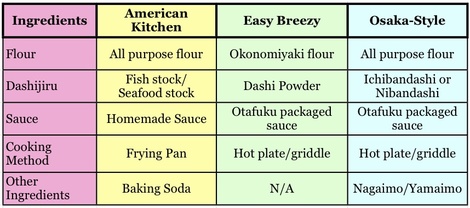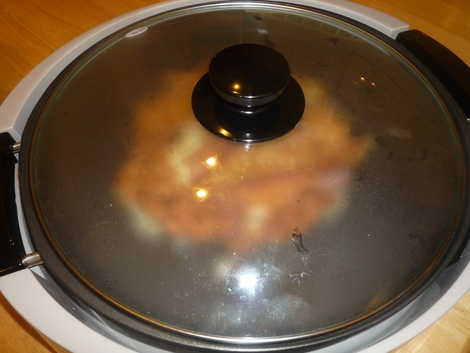The is the third post and the second okonomiyaki recipe in a four-part Osaka-style okonomiyaki posting. See Classic Osaka-style Okonomiyaki for the first post and Okonomiyaki Equipment for the second post.
This is a fast and easy version for when you’re feeling the okonomiyaki itch but want to whip it up in under 20 minutes and give Rachael Ray a run for her money. (I’m actually a Rachael Ray fan and I love the idea of quick meals)
The chart below summarizes the major differences between the types of Okonomiyaki I am posting:
Easy Breezy Okonomiyaki (Buta tama) Ingredients
(Servings 1)
150 grams of cabbage
1/4 cup of chopped green onions
1 egg
50 grams of packaged okonomiyakiko (okonomiyaki flour)
100 ml water
1/4 tsp. dashi powder
2 slices of good bacon
1 tablespoon of chopped benishoga (pickled red ginger) optional
Topping Ingredients
Otafuku Okonomiyaki sauce
Aonori
Fine katsuobushi
Equipment
1) Hot plate where you can control the temperature (this is the best)
2) Spatulas
3) Mayo dispenser for extra fun
See Okonomiyaki equipment for more detailed information.
Directions
1) Mix lukewarm water with the dashi powder until dissolved.
2) Add the instant dashijiru and egg to a mixing bowl. Make sure the dashijiru is cooled so it doesn’t cook the egg.
3) Chop the cabbage into 1/8 of an inch slices. The thickness of the cabbage is important for the cooking time I have here. It shouldn’t be too thick or paper thin so that it cooks just right. Tip: remove the core before slicing so that you don’t end up with tough pieces in the okonomiyaki. Toss the cabbage into the bowl.
4) Sift the okonomiyakiko directly into the bowl.
5) Chop the green onions finely and add them to the bowl. At this point add in any other ingredients that you like such as shrimp, squid, sakura ebi, benishoga (red pickled ginger) konnyaku, etc.
6) Mix lightly until combined but don’t over mix. This helps to keep it light and fluffy.
7) Get your hot pan or griddle hot to about 200° C or 390° F.
8) Lay the bacon on the griddle and immediately top it with the cabbage and form a round circle.
9) Allow it to cook for 5 minutes and then flip using two spatulas.
10) Cover and continue to cook for 3-5 more minutes and turn up the heat slightly to 240° C or 460° F.
11) Top with okononiyaki sauce, aonori, mayo and katsuobushi!
Mix the dashi powder in lukewarm water.
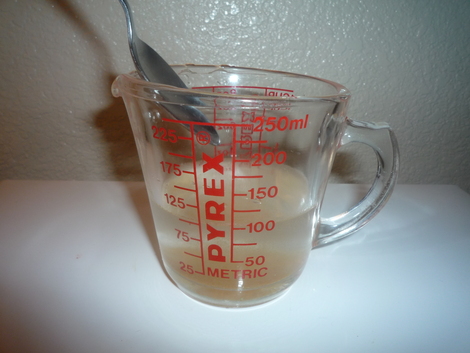
Add the dashijiru, egg to a measuring cup. It shouldn’t exceed 2/3 cup or should be 150ml.
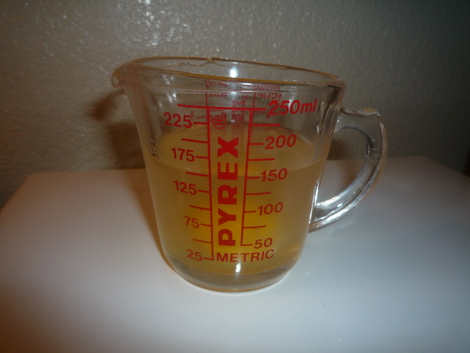
Slice the cabbage in 1/8 inch slices. Remove the core before slicing.
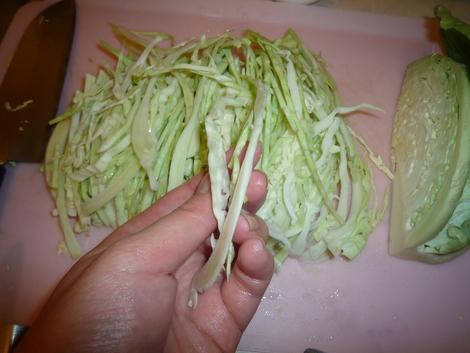
Add the dashijiru-egg mix and sifted okonomiyakiko to a bowl.
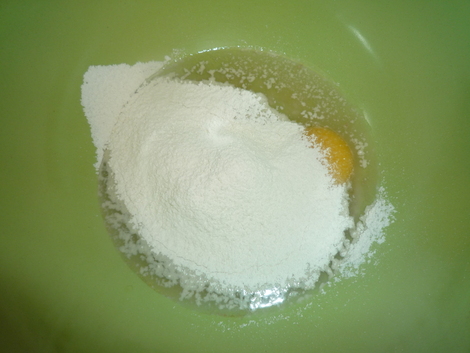
For fast and easy okonomiyaki, I like to use okonomiyakiko. Okonomiyakiko usually has kombu dashi (kelp stock) or katsuobushi dashi (bonito stock) and baking powder. Some brands have yamaimo/nagaimo powder in it as well.
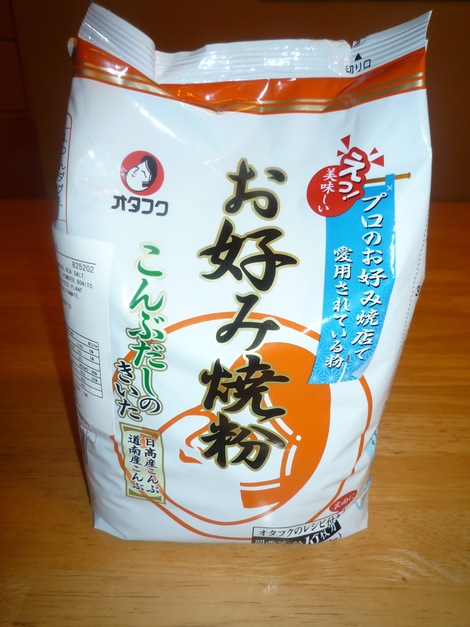
Add the cabbage, green onions and any other “gu” ingredients that you would like to add. See the Fugetsu menu link for ideas.
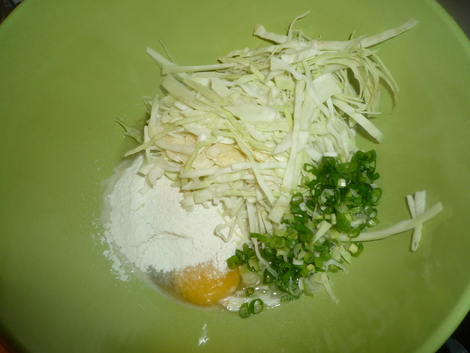
Mix lightly until ingredients are combined to keep it light and fluffy. At the last minute I decide to add in some benishoga (pickled red ginger).
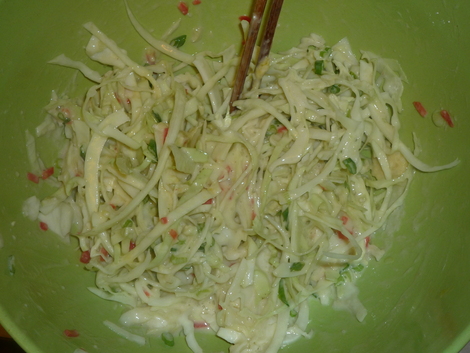
Add the bacon to the hot plate/griddle and immediately (before the bacon starts to curl) add the okonomiyaki mix on top.
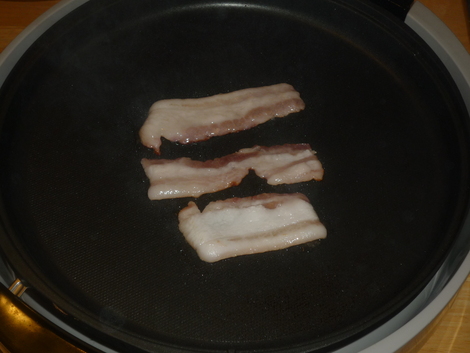
Cook at 200° C or 390° F for 5 minutes.
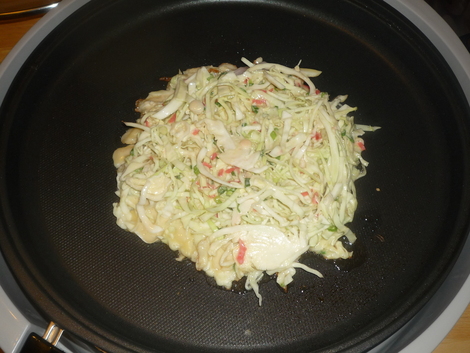
Flip the okonomiyaki once then cover and increase the temp to 240° C or 460° F and cook for 3-5 more minutes.
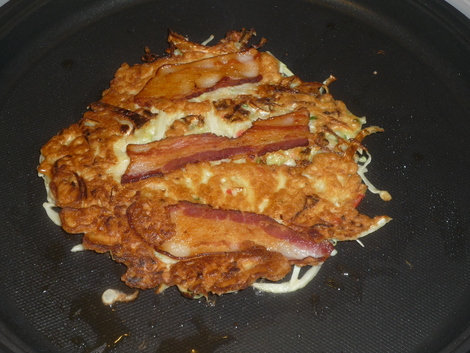
Otafuku is a pretty good brand for okonomiyaki sauce. The Otafuku lady reminds me of my great grandmother. Old school Japanese beauty…far from what’s considered beautiful today. I have no idea what I’m talking about now.
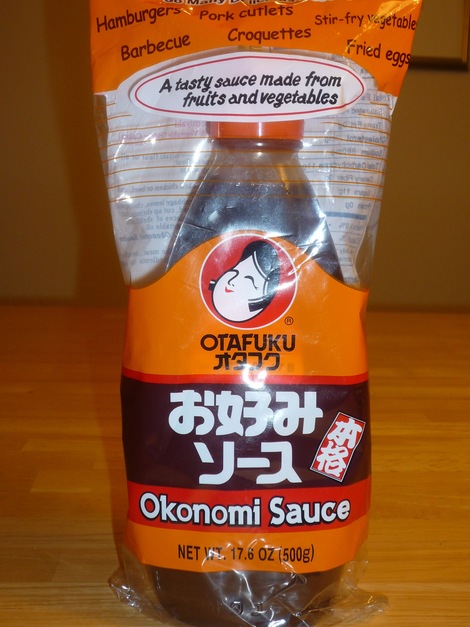
Serve it up with aononori, mayo, okonomiyaki sauce and…
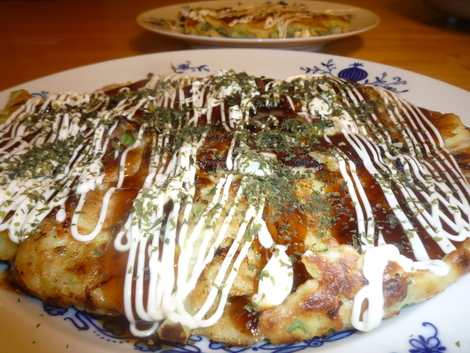
top it off with the fine katsuobushi so it can do that katsuobushi dance. (See Katsuobushi on the different types.)
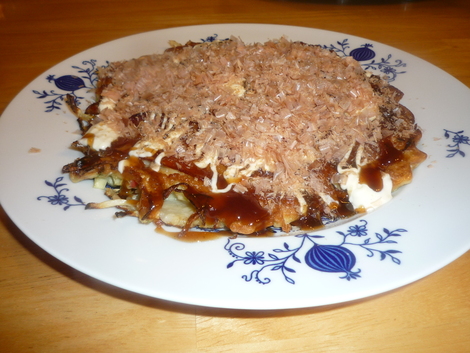
The larger katsuobushi flakes absorb and sop up the sauce which can be too much.
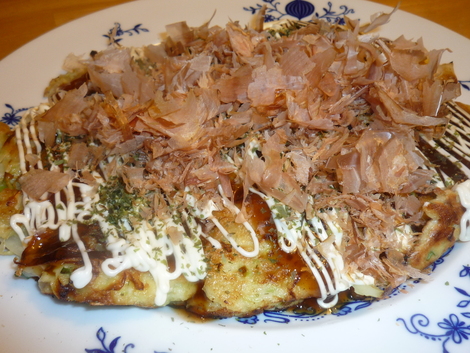

Naomi Kuwabara was born and raised in California but spent many summers in Japan growing up. She has spent time living in Hokkaido and Osaka, both meccas for Japanese cuisine. Her passion is cooking and sharing her experiences cooking Japanese food with others. Her blog Umamitopia is about her experiences cooking Japanese food. Her greatest inspirations are from her mother and grandmother. Her cooking adventures can be found at http://umamitopia.com.

